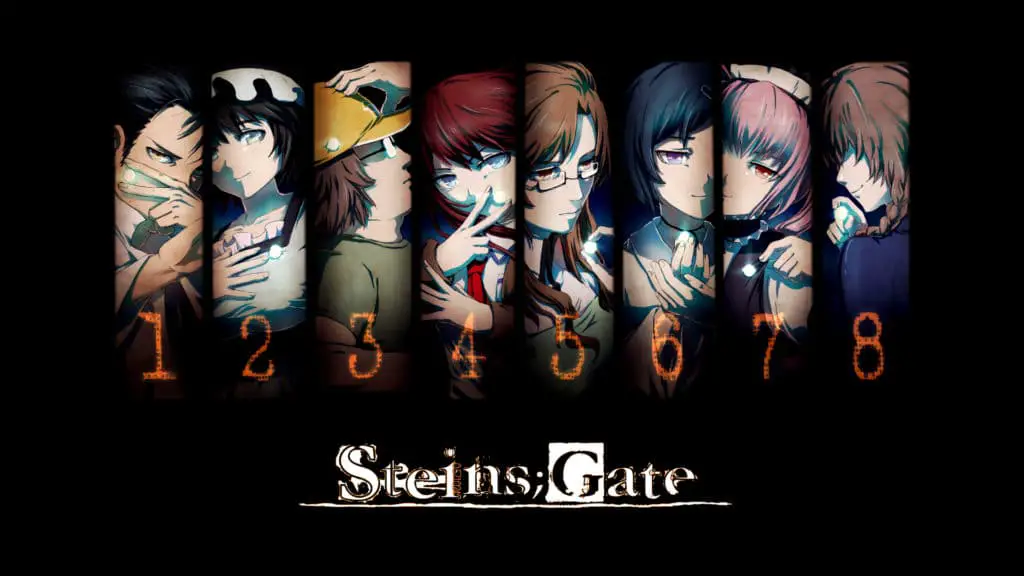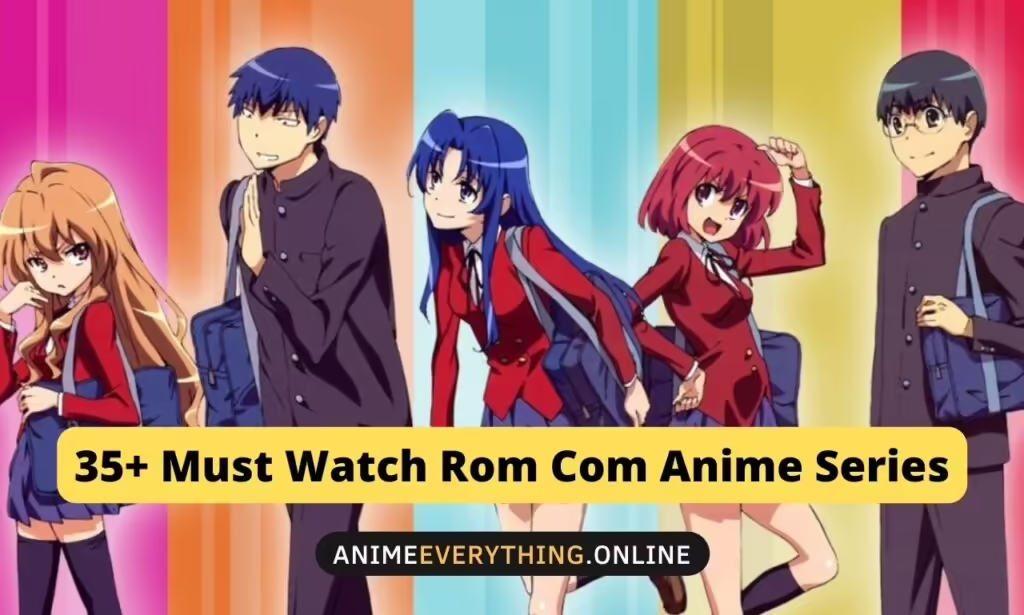Ghibli animes are known for its artistic take on storytelling that has been impressing fans for almost 40 years. Since 1986, Studio Ghibli has been revolutionizing animation, blending empathy with thrilling adventures.
Their debut film, Castle in the Sky, led by Hayao Miyazaki and Isao Takahata, set the stage for the company. Miyazaki’s My Neighbor Totoro and Kiki’s Delivery Service followed, along with Takahata’s Grave of the Fireflies. Producing hit after hit, Ghibli anime films became a global phenomenon appreciated by fans around the globe.
In this article, I’ll be listing down the top 10 Ghibli Animes that you must watch among all the dozens of shows they’ve produced.
Top 11 Must Watch Ghibli Animes Of All Time
#11. “Whisper of the Heart” (1995)
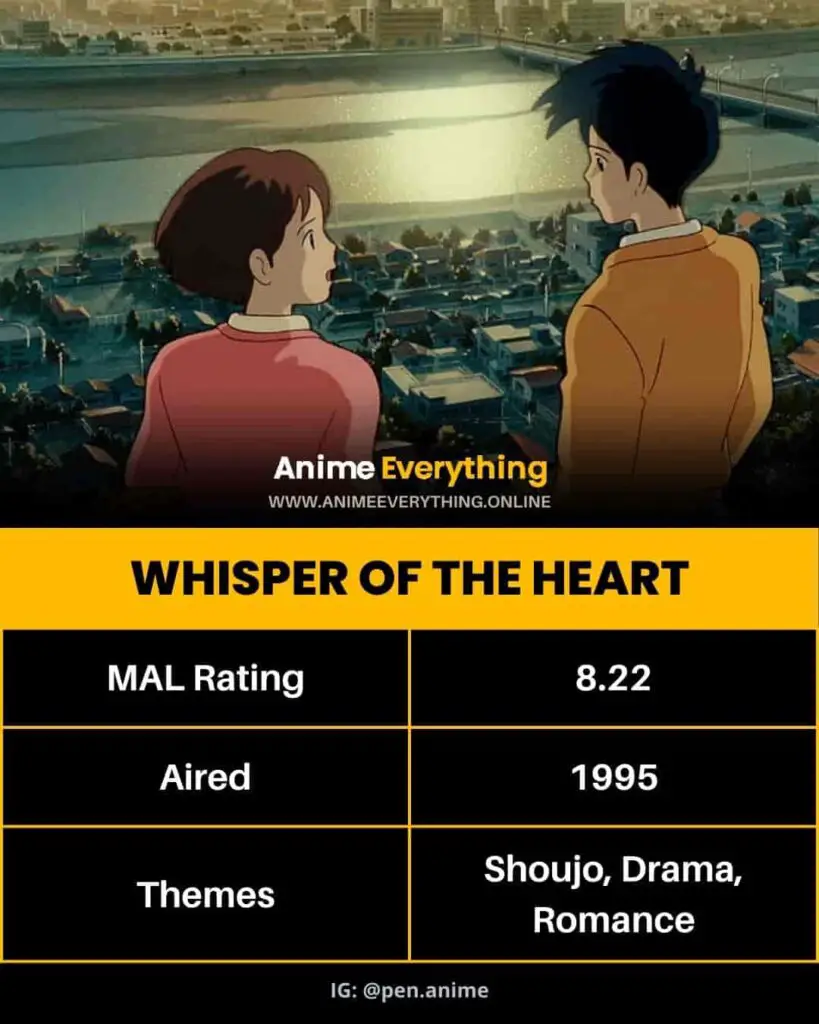
Whisper of the Heart, based on Aoi Hiiragi’s manga, combines drama with a story of first love.
It follows Shizuku, an aspiring writer, and Seiji, a boy with a passion for crafting violins. Alongside personal struggles, the film features stunning fantasy sequences, bringing to life Shizuku’s story involving The Baron, later seen in The Cat Returns.
Directed by Yoshifumi Kondō, the movie showcases surreal visuals inspired by Naohisa Inoue’s artwork and creatively reimagines the song “Take Me Home, Country Roads.” Despite Kondō’s untimely passing, Whisper of the Heart remains a significant achievement.
#10: “The Princess Kaguya’s Story” (2013)
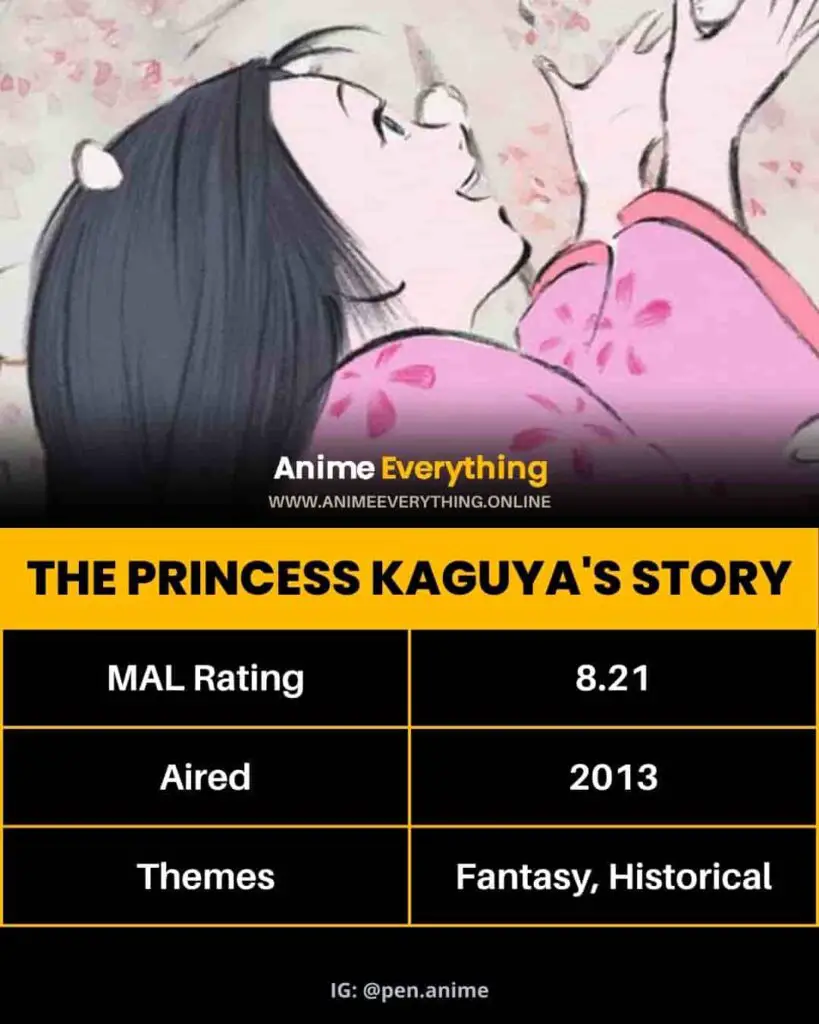
Isao Takahata, a Studio Ghibli co-founder who passed away in 2018, believed animation offers unique depths of reality.
He aimed to capture solid reality in animation, unlike live-action films. His final film, The Tale of the Princess Kaguya, is based on a childhood story about a bamboo cutter who finds a miniature girl.
Takahata opted for a watercolor aesthetic to evoke empathy for the princess.
#9: “Laputa: The Sky Castle” (1986)

Hayao Miyazaki directed the first official Ghibli film, Laputa: Castle in the Sky, in 1986. It showcases the studio’s talents. This movie was a grand success that set high standards for Ghibli animes.
The story follows Pazu and Sheeta’s adventure, encountering government forces, sky pirates, and ancient robots. Influenced by Gulliver’s Travels and Welsh mining towns, this movie will take you on a fantasy adventure like nothing else.
#8: “Grave of the Fireflies” (1988)
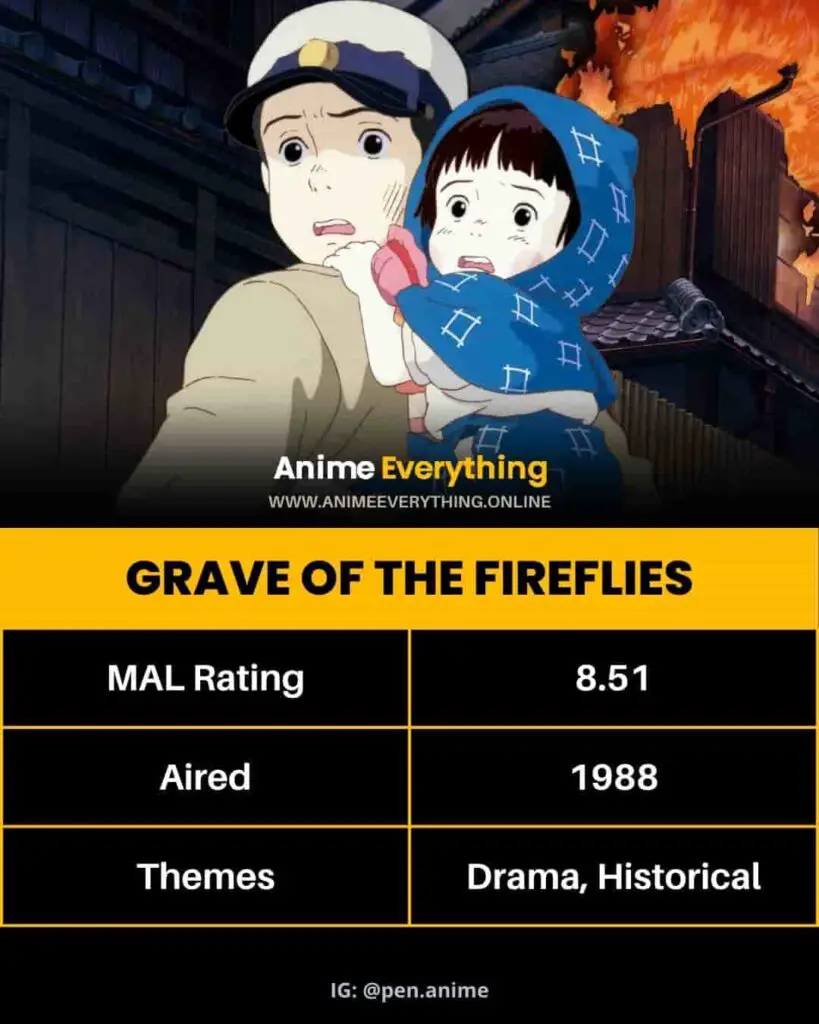
Isao Takahata’s adaptation of Akiyuki Nosaka’s short story, “Grave of the Fireflies,” delivers a potent antiwar message.
It shows the suffering of Seita and Setsuko, siblings in Kobe, Japan, amid the final months of World War II. Struggling with hunger, disease, and loss after their mother’s death in a bombing, their story is a poignant depiction of the human cost of war.
Takahata’s animation adds depth, making their tragic journey all the more impactful.
#7: “My Neighbor Totoro” (1988)
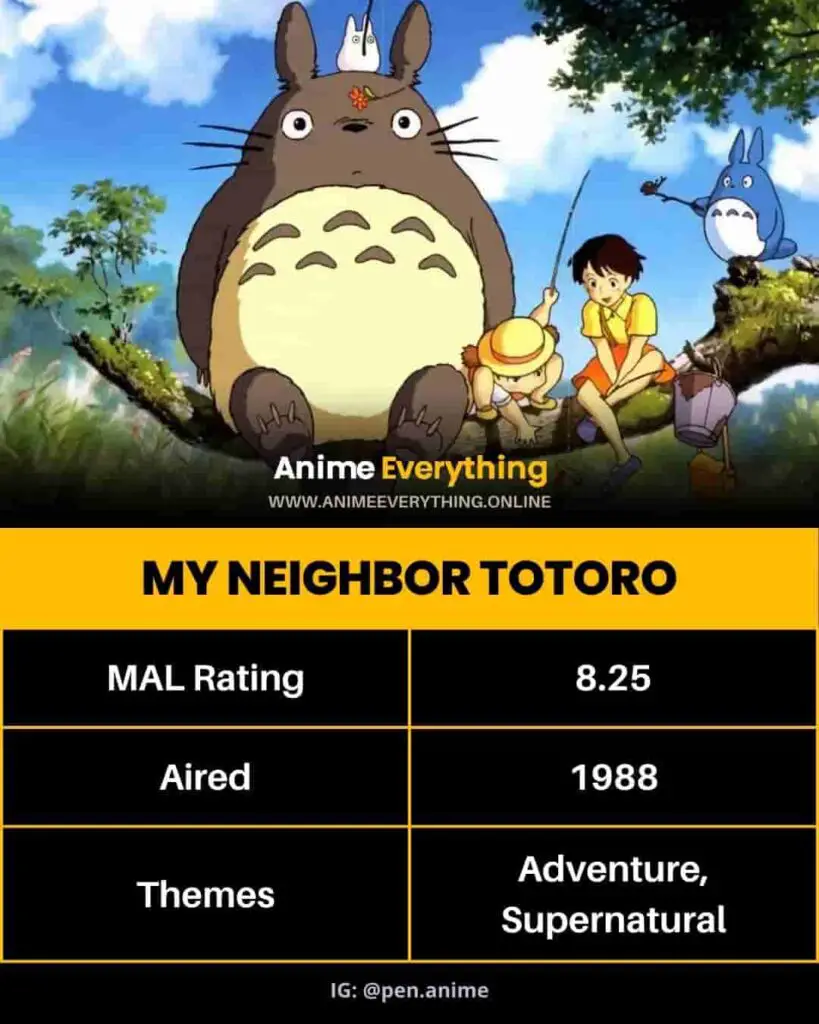
It’s intriguing how My Neighbor Totoro and Grave of the Fireflies were once shown together, despite their contrasting themes. Grave of the Fireflies explores the harsh realities of adulthood, while My Neighbor Totoro celebrates innocence.
The film follows Satsuki and Mei, who move to the countryside with their father to be near their sick mother. Unlike other Ghibli animes with similar setups, they embrace their new environment joyfully.
They encounter Totoro, a mysterious creature embodying the magic of childhood. Totoro’s charm lies in his enigmatic nature, representing nature’s friendliness. Totoro remains a beloved symbol of Studio Ghibli, captivating audiences worldwide.
This film is so popular that you are sure to find Totoro on most merch sites like the Ghibli store, Amazon and eBay.
#6: “Nausicaa of the Wind Valley” (1984)
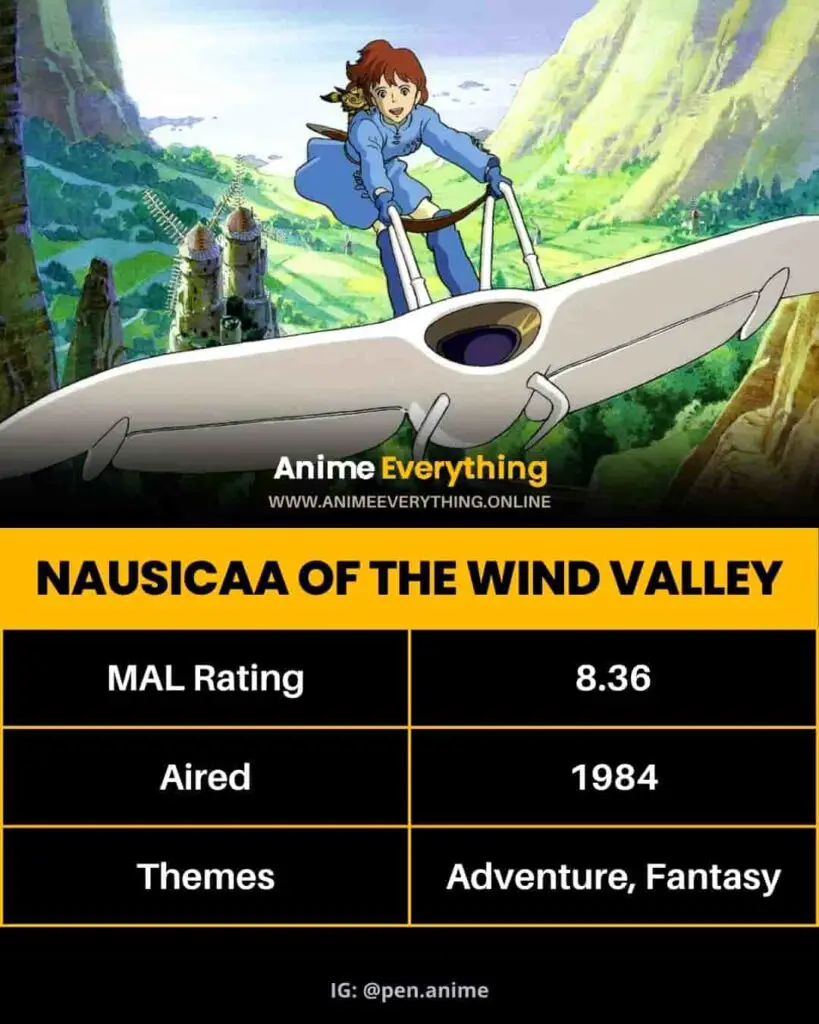
Although not officially a Studio Ghibli film, Nausicaä (released in 1984) laid the foundation for the studio’s establishment.
Miyazaki’s postapocalyptic fantasy, adapted from his Manga, is iconic for its groundbreaking animation and storytelling.
Set in a world recovering from a catastrophic war, Nausicaä follows the titular princess as she battles ecological threats.
Featuring themes of nature’s fragility and strong female protagonists, Nausicaä influenced future Ghibli works.
#5: “Kiki’s Delivery Service” (1989)

“Kiki’s Delivery Service,” a notable early hit from Studio Ghibli. It masterfully navigates the delicate balance between vulnerability and empowerment in the journey of a young witch named Kiki.
As she forges friendships along her path, the film artfully depicts the transitional phase between reliance on adults and the quest for individual identity.
This narrative underscores the notion that empowerment need not erase vulnerability. It is an interesting perspective that’s rarely explored in anime stories.
#4: “Howl’s Moving Castle” (2004)
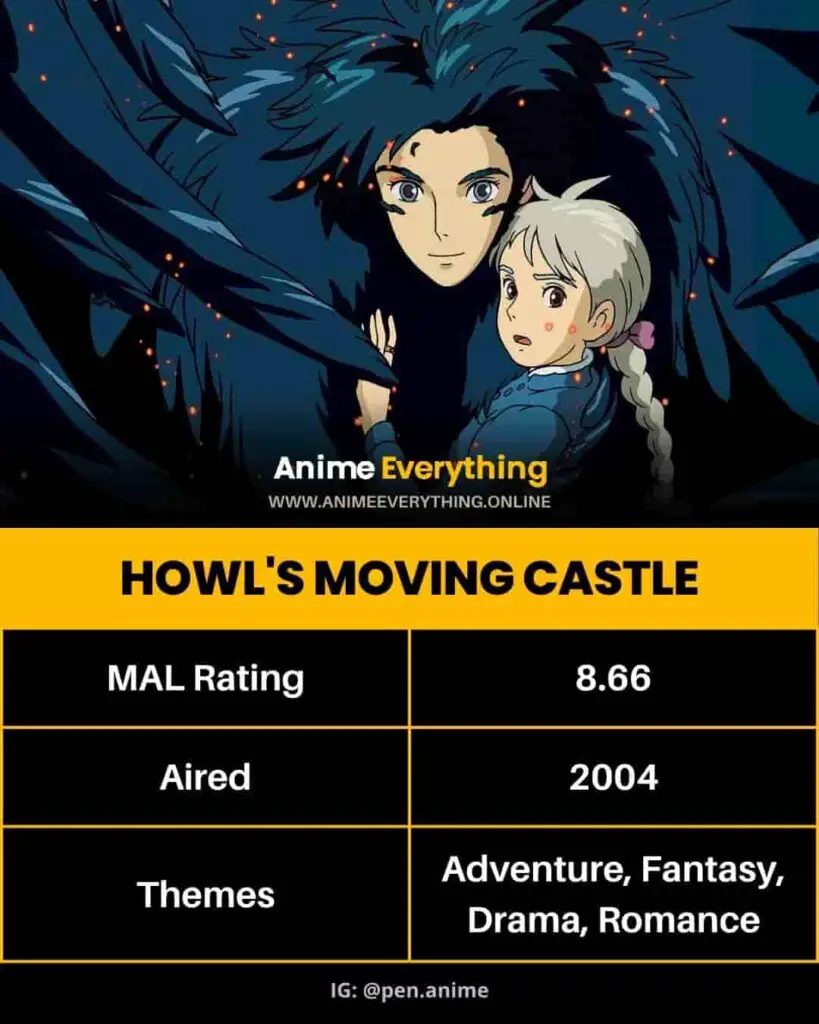
When discussing Ghibli animes, Howl’s Moving Castle often sparks debate. The 2004 film tells the tale of a young woman cursed with old age, who ends up tending to a wizard in a wandering fortress.
While some adore it, others feel it doesn’t quite measure up to Miyazaki’s other works. Nonetheless, it stands as one of his most captivating and innovative creations.
Based on Diana Wynne Jones’ book, Miyazaki’s adaptation makes it uniquely his own, crafting a vivid world of magic, Dämonen, and wonder, juxtaposed with the harsh realities of violence and war.
It’s a story of transformation and self-discovery for Sophie as she embarks on a journey to reclaim her youth and love, intertwined with Howl’s own struggles as a reluctant participant in human conflict.
Miyazaki’s vibrant storytelling and imaginative visuals enchant both children and adults alike, leaving a lasting impression of childlike wonder.
#3: “The Princess Mononoke” (1997)
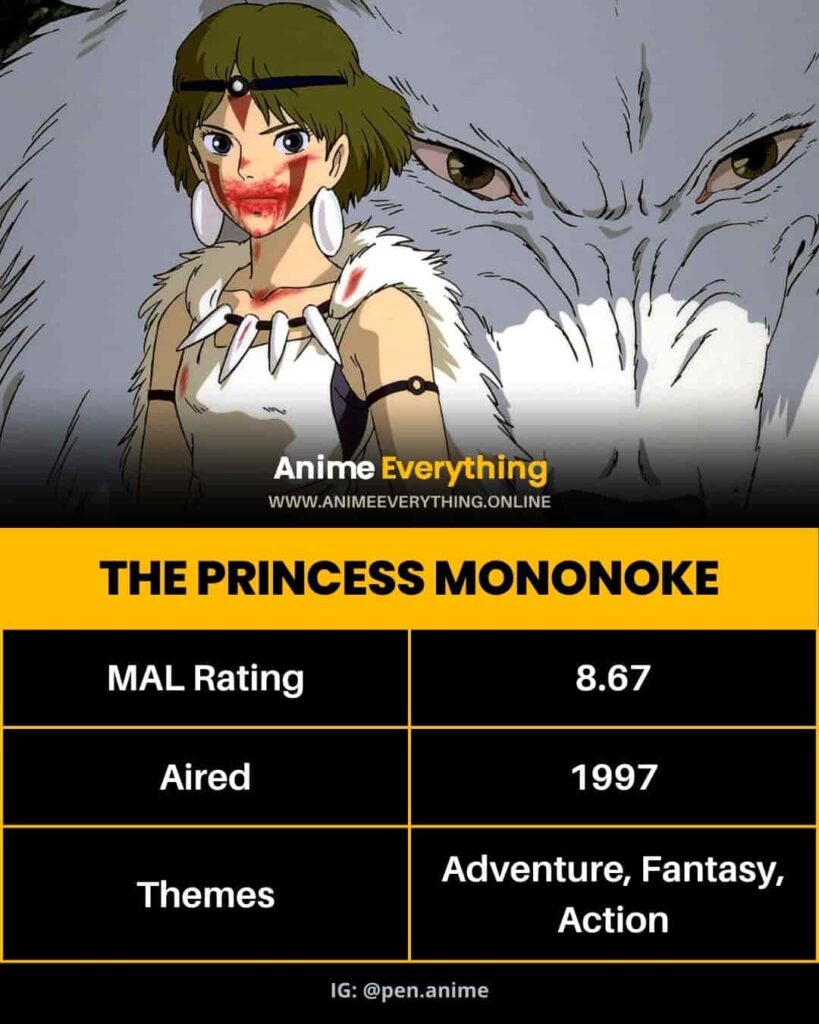
Spirited Away earned Miyazaki an Oscar, but Princess Mononoke could have been a strong contender. The film unfolds in 13th-century Japan, portraying the conflict between animal gods defending the forest and humans seeking to exploit it for iron.
San, raised by wolf gods, opposes humanity, while Lady Eboshi, a complex figure, aims to create a refuge for society’s outcasts but inadvertently sparks chaos.
Caught between them is Ashitaka, a cursed prince striving to reconcile both sides. It’s a multifaceted narrative, exploring shades of gray amidst lush visuals of a vibrant world.
The film delves into Miyazaki’s recurring theme of the balance between humans, technology, and nature, making it one of his most compelling works.
#2: “Spirited Away” (2001)
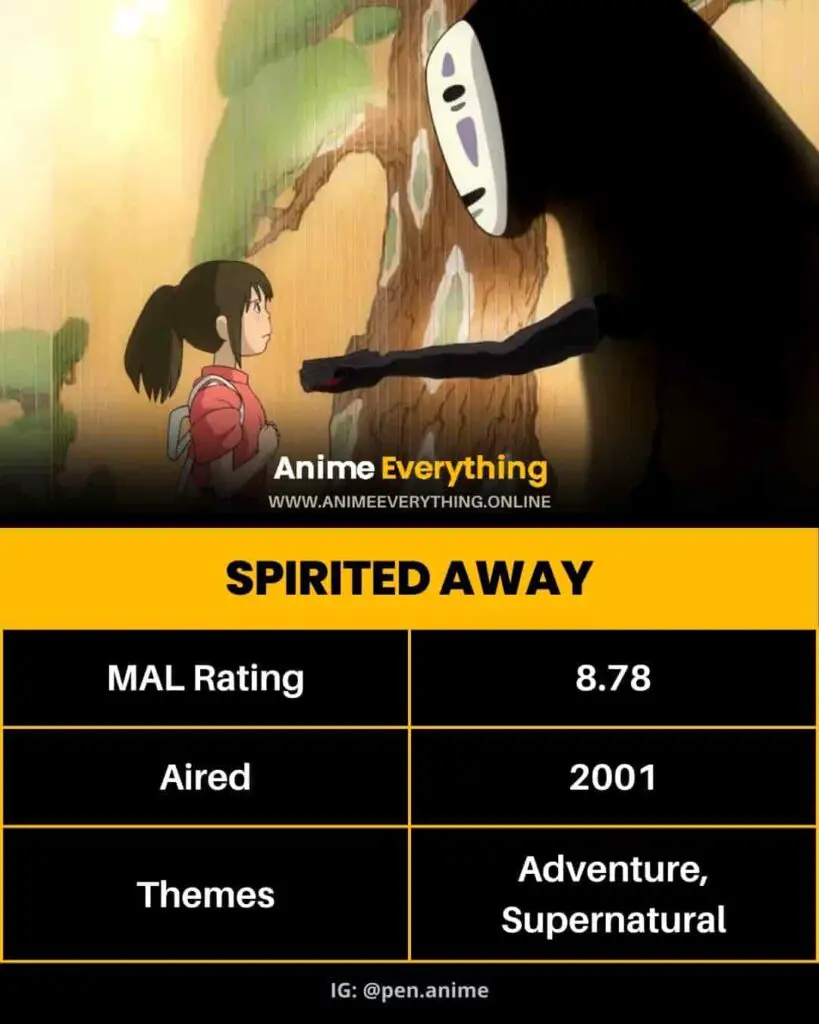
In the two decades since its release, Spirited Away by Studio Ghibli has transcended as a modern classic. It follows the journey of Chihiro, a 10-year-old girl, into a spirit-filled Wonderland.
Spirited Away is revered alongside beloved Disney classics, embodying cultural significance. It captivates audiences without patronizing, leaving lasting impressions. Chihiro represents a strong yet vulnerable weibliche Hauptrolle, a rarity in animation.
The film seamlessly integrates fantasy, becoming essential rather than mere escapism. Its visual artistry rivals any animated masterpiece, worthy of display.
Spirited Away embodies Ghibli’s empathy and empowerment, offering inspirational journeys.
#1: “The Boy and the Heron” (2023)
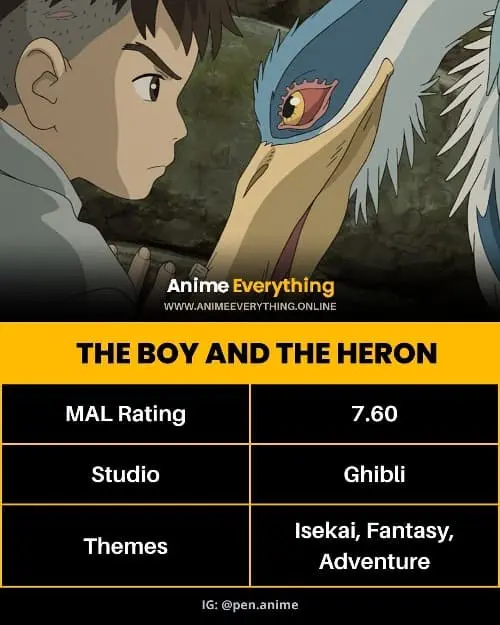
The Boy and the Heron is one of the most recent Ghibli animes to have released. It was Hayao Miyazaki’s first feature film in 10 years. He directed it in traditional style, using hand-drawn animation. This is also the second Ghibli movie to have won the oscar award.
After our main character’s mother died in the war, Mahito relocates to his family’s countryside estate.
Mysterious events unfold, leading him to an ancient tower where a gray heron resides. When Mahito’s stepmother vanishes, he ventures into the tower with the heron, discovering a fantastical realm of the living and the dead.
Guided by the heron, Mahito embarks on an epic journey to uncover secrets about himself and this mysterious world. Featuring voices of Christian Bale, Dave Bautista, Gemma Chan, Willem Dafoe, Karen Fukuhara, Mark Hamill, Robert Pattinson, and Florence Pugh.
